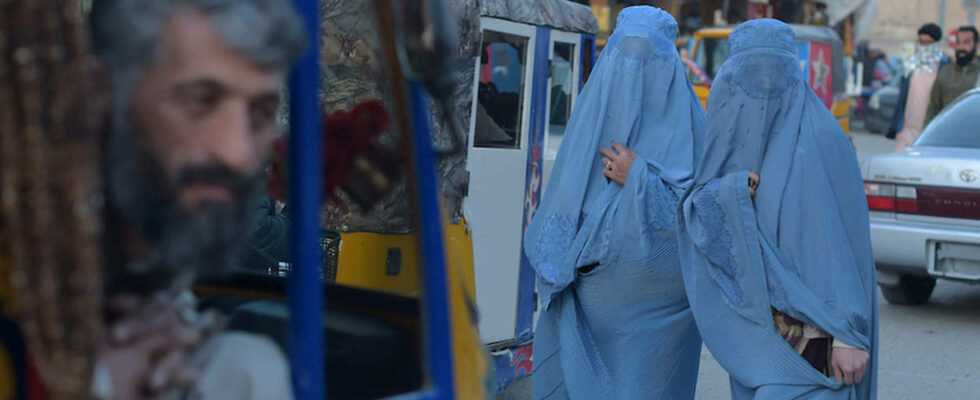NOTnew hardening of the Taliban regime in Afghanistan. In a decree issued to the press in Kabul, the supreme leader of the Taliban and Afghanistan, Haibatullah Akhundzada, ordered that women wear “a chadri [autre nom de la burqa], because it is traditional and respectful”. “Women who are neither too young nor too old should veil their faces when facing a man who is not a member of their family”, to avoid provocation, the decree adds. And if they don’t have important work to do outside, it is “better for them to stay at home”.
This decree also lists the punishments to which heads of families are exposed who do not enforce the wearing of the burqa. Since the Taliban returned to power in mid-August, the dreaded Ministry for the Promotion of Virtue and Prevention of Vice had issued several recommendations on how women should dress. But this is the first edict on the subject promulgated at the national level.
The Taliban had previously demanded that women wear at least a hijab, a scarf covering the head but revealing the face. But they warmly recommended the wearing of the burqa, which they had already imposed during their first passage to power between 1996 and 2001. During this first regime, they had deprived women of almost all rights, in accordance with their ultra- strict adherence to Sharia, Islamic law. Agents from the Ministry for the Promotion of Virtue and the Prevention of Vice whipped anyone who was caught without a burqa.
Broken promises
After their return to power, after twenty years of occupation by the United States and their allies, who had driven them out in 2001, the Taliban had promised to be more flexible this time. But they soon reneged on their promises, again steadily eroding rights and sweeping away twenty years of freedom won by women.
READ ALSOKabul, the dreadful rescuer who can
Women are now largely barred from government jobs and prohibited from traveling abroad or long distance within the country unless accompanied by a male family member. In March, the Taliban made high schools and colleges close to girls, just hours after their long-announced reopening. This unexpected volte-face, which was not justified except to say that the education of girls must be done in accordance with Sharia law, scandalized the international community.
The Taliban have also imposed the separation of women and men in public parks in Kabul, with visiting days imposed for each sex. Over the past two decades, Afghan women had acquired new freedoms, returning to school or applying for jobs in all sectors of activity, even if the country remained socially conservative.
Women’s protests
Women first tried to assert their rights by demonstrating in Kabul and in major cities after the return to power of the Taliban. But they fiercely repressed the movement, arresting many activists and detaining some, sometimes for several weeks. The burqa is a traditional Afghan item of clothing, widely worn in the more remote and conservative parts of the country. Even before the return to power of the Taliban, the vast majority of Afghan women were veiled, if only with a loose headscarf.
READ ALSOIn Afghanistan, the Taliban harden the repression
